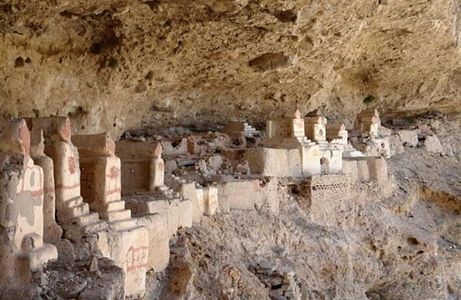Heftad Mullah Cemetery is a cemetery located in the city of Zabol, Sistan and Baluchestan Province, Iran. It is one of the oldest and most important cemeteries in the region, and is home to the graves of many important figures from Iranian history, including poets, scholars, and religious leaders.
The cemetery is thought to have been founded in the 8th century AD, and has been continuously used ever since. It is divided into several sections, each of which is dedicated to a different group of people, such as the wealthy, the poor, and the religious. The cemetery is also home to a number of important historical monuments, including the tomb of the poet Rudaki.
Heftad Mullah Cemetery is a popular tourist destination, and is known for its beautiful architecture and its peaceful atmosphere. It is also a significant cultural and historical site, and is an important part of the heritage of Sistan and Baluchestan Province.
Here are some additional details about the cemetery:
It is located in the city of Zabol, which is the capital of Sistan and Baluchestan Province.
It is one of the oldest and most important cemeteries in the region.
It is home to the graves of many important figures from Iranian history, including poets, scholars, and religious leaders.
It is divided into several sections, each of which is dedicated to a different group of people.
It is also home to a number of important historical monuments.
It is a popular tourist destination.
It is known for its beautiful architecture and its peaceful atmosphere.
It is also a significant cultural and historical site.
It is an important part of the heritage of Sistan and Baluchestan Province.
The cemetery is named after the 78 scholars who are buried there. The most famous of these is Rudaki, who is considered to be the father of Persian poetry. Other notable figures buried in the cemetery include the poet Saadi Shirazi, the philosopher Avicenna, and the mathematician Omar Khayyam.
The cemetery is a UNESCO World Heritage Site. It is a unique example of a medieval cemetery that has been continuously used for over 1,000 years. The cemetery is also home to a number of important historical monuments, including the tomb of Rudaki, which is a UNESCO World Heritage Site.
The cemetery is a popular tourist destination. It is known for its beautiful architecture and its peaceful atmosphere. The cemetery is also a significant cultural and historical site, and is an important part of the heritage of Sistan and Baluchestan Province.


